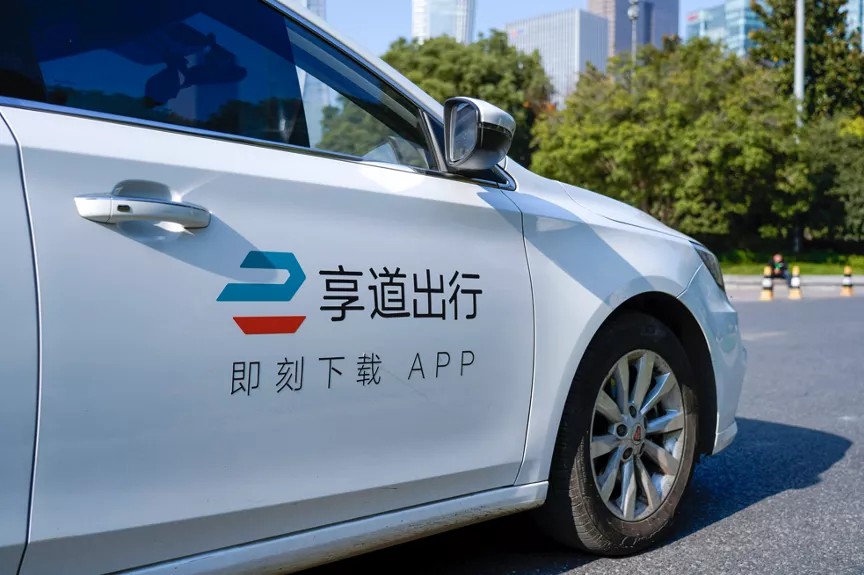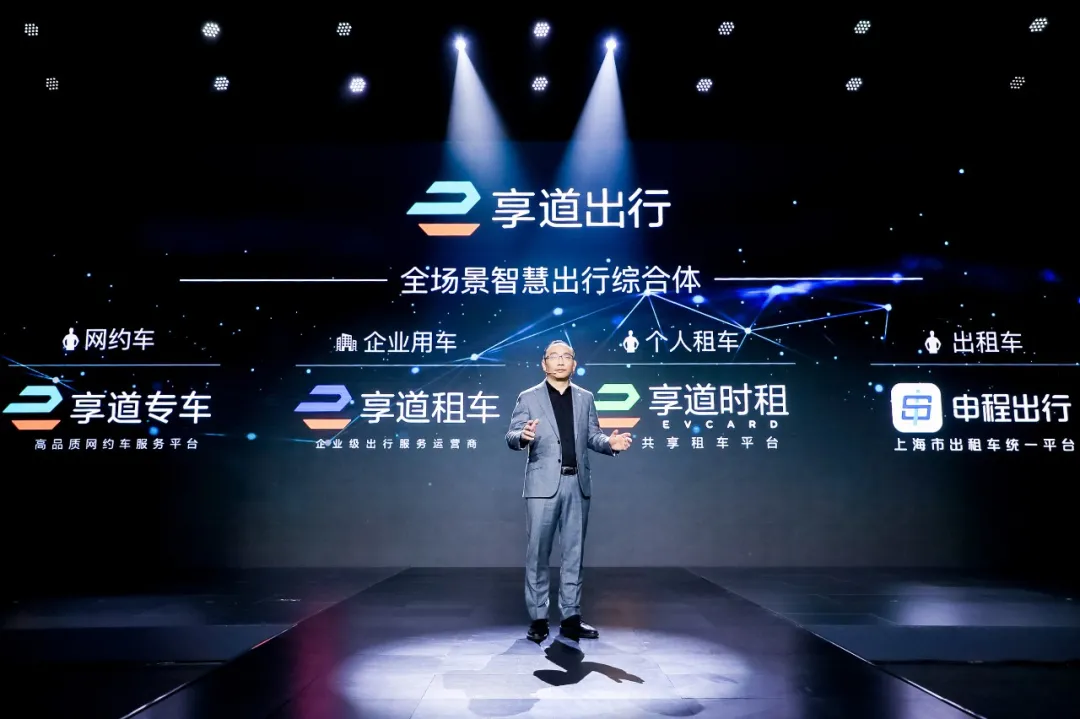Original Markdown Text
原创 Roomy 出行百人会 昨天
"市场格局远远未定。"
在滴滴被审查之际,一位互联网人再次拿出了他的观点,从网约车烧钱大战开始,就没有改变过。
依据是,只要滴滴运力一天不足,市场就永远有空档,对手们就在活跃,滴滴就很难停下来。
即便大规模烧钱已成过去,但某一城市的 「巷战」 依旧频繁。网约车新政之后,车企投资的 「国家队」 入场,占据出行市场 80% 份额的滴滴,龙头之位,也并非如想象中稳固。
在 20% 市场里寻找撬动格局的杠杆,其他玩家都在等待着一个时机:或者是掌握住市场需求的改变,或者是稳固的格局出现裂缝。
机会来了。滴滴 25 款 APP 强制下架之际,网约车市场腾挪出了巨大的空间。嗅觉灵敏的平台,都不愿意放弃这个大好时机,"网约车新一轮大战" 话题热度,骤然升温。
「一个月虽然短,但想要展示优势,足够发挥了」。上述互联网人认为,即便滴滴再次回归,在接下来的战场,迎战的不再是散兵游勇,而是完善合规标准和优化服务质量的 「新队伍」。

最近在虹桥机场打车,我正好用到享道出行,司机秦师傅说,最近的接单量比以往多了很多,连上厕所都顾不上了,开心之余他有些感慨。
「滴滴这事儿,我最大的感受是,平台对安全标准和服务质量,在增加。」
## 如何从 20% 的市场冲出来?
稳固多年的格局被打破,但是被审查事件带来的影响,远不止于市场空间的腾挪,随之而来的是对出行市场的标准,再次界定。
如果说,此前的竞争是比资金的雄厚,比流量的多少,如今,竞争逻辑发生了改变:更注重安全合规和服务品质。
尤其是网约车新政之后,「双合规」,成为监管的重要指标之一。
于规模庞大的滴滴而言,合规意味着巨大的成本,在成本控制与服务提升之间,需要找到一个平衡点。这其实很难,平均日交易量 4100 万单,全球活跃用户 4.93 亿,庞大的数据流,让滴滴的抉择也不够彻底。
草蛇灰线,伏脉千里,埋下了后续的隐患。
新政之后,合规的司机人数锐减,滴滴不得不通过补贴来吸引符合条件的司机。作为出行市场最大的平台,滴滴的一小步,都拉扯着行业的神经。
这场盛世危机,增加了很多不确定性。但有一点是肯定的,滴滴踩下的每一个坑,都足以警示。
Translated Markdown Text
Original Roomy Centennial Meeting yesterday
"The market situation is far from settled."
As the scrutiny of Didi intensifies, an internet figure offers his opinion that remains unchanged since the start of the ride-hailing price war.
His rationale is that as long as Didi has insufficient capacity, there will always be a gap in the market, in which competitors remain active, and Didi finds it hard to stop.
Even though large-scale burning of money is a thing of the past, "guerrilla warfare" in certain cities still occurs frequently. Since the new regulations for ride-hailing cars came into effect, companies investing in such ventures, like Didi, which holds an 80% share of the online transportation market, do not have the firm grip on the market position they imagine.
In the 20% market, other players are waiting for a chance to gain leverage and disrupt market conditions: either by grasping the changes in market demand or pressing on the crack in an otherwise stable pattern.
Opportunities have arisen, and with the forced removal of 25 Didi applications, the ride-hailing market has opened up a significant space. Sensitive online platforms refuse to relinquish this golden opportunity, and the degree of interest has soared in a "new round of the ride-hailing war."
"Even though it's only a month, it's sufficient to demonstrate their advantages." The internet figure above thinks that Didi, even if it returns, will no longer face just random players. Instead, it encounters a "new team" that incorporates compliance standards and optimized service quality.

On a recent trip to Hongqiao Airport, I used Xiangdao as my ride-hailing service. The driver, Mr. Qin, mentioned that demand has exceeded past levels, so much so he rarely even has time to use the restroom. In addition to his exuberance, he believes that "the platform is increasing its safety standards and service quality."
## How to emerge from the 20% market?
The stable environment previously established has been broken, but the impact of the current scrutiny lies far beyond the shift in market space. What followed was a re-definition of standards in the service industry.
If previous competition focused on how much money one has, how much traffic had been won, the paradigm of competition has now shifted to emphasizing safety compliance with quality service.
Especially after the implementation of new regulations for online ride-hailing cars, "dual compliance" is one of the crucial criteria for government monitoring.
For Didi, with its huge scale, compliance means enormous costs. It needs to find a balance between controlling costs and upgrading services. This is difficult; the average daily trading volume reaches 41 million units with 493 million global active users. The vast amount of data they receive means that their decision-making is not always thorough.
Grass snakes and gray lines, veins that go on for miles, all seeds that sow for hidden problems in the future.
Since the implementation of the new regulations, the number of compliant drivers has sharply declined, forcing Didi to provide subsidies to attract qualified drivers. As the largest ride-hailing platform, every small step Didi takes affects the entire industry.
This crisis has brought many uncertainties. However, one thing is clear, every pit Didi steps into is enough to alert the ride-hailing market.
Therefore, platforms that want to break through their market share are working hard to avoid the pitfalls along the way. Furthermore, the lack of sufficient market share means there is a greater market opportunity to achieve better compliance.
This has already been proven by data from the Ministry of Transportation.
According to Ministry of Transportation data, there are 236 ride-hailing platforms nationwide. Since the Ministry released data in October of last year, Xiangdao Travel has won the double compliance award six times.
Master Qin has been driving for Xiangdao Travel for less than a year and has used several platforms including Didi and Gaode. His experience has been mixed.
“Xiangdao’s driver policies are more thoughtful, with cameras installed in all their cars and some psychological counseling courses.” After frequent accidents, Xiangdao Travel’s drivers have also faced similar “incomprehensible” situations where the platform ultimately provided evidence to reveal the truth.
“Resolving safety issues requires innovation in business models and technological infrastructure to reshape transportation products,” said T3 Travel CEO Cui Dayong, adding that the industry will ultimately return to “competing on safety and service.”
With a single month’s ride-hailing orders reaching as high as 800 million, safety is a must behind the massive amount of data. Building a comprehensive “safety net” is a challenge that all transportation platforms must overcome.
The recently revived Meituan Ride-hailing app specifically emphasizes safety and privacy in its top three service agreement provisions. Compared to internet transportation platforms born out of the “money burning war”, capital-intensive automakers investing in transportation platforms are more cautious about safety.
For example, during Xiangdao Travel’s early operation, “all drivers had to undergo 100% deep background checks and have their identity verified,” ensuring consistency of both car and driver through a dual GPS verification system on the mobile app.
As Cui Dayong said, “Safety is the original intention of our product, otherwise no amount of investment is meaningful.” Xiangdao Travel, as a national team member, also upholds this philosophy. “Being able to enjoy ultimate safety at an affordable price is enough. Users really don’t care about subsidies,” a comment that has received a high number of likes.
Currently, Didi is undergoing a rectification period with significant impacts on users and the market, resulting in various degrees of difficulty in hailing a ride across the country.
“The number of orders our Didi drivers received has significantly decreased,” said Master Li, who has recently used Gaode platform frequently due to high passenger volume. Another platform he uses is Xiangdao Travel, which has “better standards.”
The downfall of internet platforms has always been data and incremental growth, once it is choked off, it’s like being strangled. With Didi being taken down, there is currently no incremental space in its entire app matrix. The new warning is that maintaining existing stock while expanding incrementally is a necessary feat.In the prospectus of Didi, there is an interesting statement that “We recognize that drivers want to earn more money while passengers want to pay less, which is a persistent challenge.” Due to the difference in the platform’s commission, drivers often choose to take orders from multiple platforms rather than just one. For passengers, the value of a ride-hailing platform is limited to getting a car. Therefore, whoever has a better cost-performance ratio will be chosen.
Therefore, how to attract and balance customers and drivers has become an eternal topic in the transportation market.
Despite Didi’s huge investment in developing user habits, the current situation has made platforms with a market share of only 20% aware that there is an opportunity with their competitors leaving a gap.
Gaode is recruiting platform drivers; Meituan’s ride-hailing app is back online… All of them are hoping to leverage Didi’s supply and demand advantages of drivers and passengers.
This is an opportunity.
However, having many ride-hailing platforms means increased competition and more options for users. Who can break through the defense line of 80% and emerge from the 20% market remains to be seen.
Launching a New “3+3” Pattern
Meituan’s ride-hailing is “resurrected,” Gaode is commission-free, T3 is in “full battle,” and Enjoy Travel offers “Douban Coupons for a 1 Yuan Ride” … Subsidies, benefits, and ubiquitous “street battles” have laid the foundation for changes in the transportation market pattern.
The ride-hailing war has never been settled.
The middle-ranking platforms have always been looking for new opportunities. Players are surrounding Didi, and everyone is looking for a chance.
Now, the opportunity is right in front of them. Will Didi’s incident become the chance for Gaode, Enjoy Travel, and others to break through the barriers? Will the history of 2019, where Didi Hitch was taken over by Dida due to rectification, repeat itself? Nowadays, the carpooling business has become Dida’s world.
July 4th is a day worth remembering, as the stable transportation market pattern of recent years began to change.
On this day, netizens summarized the ride-hailing platforms that can replace Didi. Gaode Ride-Hailing, Enjoy Travel, T3 Travel, Meituan Ride-Hailing, Cao Cao Ride-Hailing… They are all listed in the recommended directory, and their app downloads have increased significantly, ranging from 2 to 6 times.
There are old opponents who have survived the burn rate war, and new strong players relying on the backing of powerful automakers. But for everyone, this is a war that cannot be missed, and no one wants to go back to the previous state of “drinking soup.”
To grow rapidly like Dida back then is the cry of all platforms, both those who have spoken it out and those who have not.Is there a chance for the waist platform that sounded the assembly call to break through the clouds?
Compared with Didi, other platforms are not heavyweight in terms of brand awareness and capital reserves, but they each have their own advantages.
Gaode and Meituan use the aggregator-style ride-hailing platform mode, including Cao Cao Travel, Ruqi Travel, Enjoy the Road and other platforms with huge data and traffic. At present, they are putting a large amount of advertising on multiple platforms to attract users and recruiting drivers in multiple cities.
Both Gaode and Meituan ride-hailing platforms are undoubtedly aimed at huge traffic and data. Ride-hailing platforms supported by automakers have different strategies.
“T3 Travel” with a background of central enterprises claims to write safety into the brand’s genes. Ruqi Travel, backed by GAC Group, has always adhered to the key to winning is high-quality services. Cao Cao Travel, backed by Geely Automobile, also uses services to attract new users. Traditional taxi companies have joined the battle for initiative, of which Shouqi Yueche is a typical player.
Traditional car companies are the main players in increasing investment in the online ride-hailing market in recent years, but they mostly use the asset-heavy B2C mode. Although they have the advantage of car resources, they face challenges such as supply shortages, short-term capacity, and heavy costs…
“The biggest difference between the travel companies with car manufacturer backgrounds and internet travel companies is that their strategic thinking is not flexible enough,” said the above-mentioned person in the internet industry.
Enjoy the Road, backed by SAIC Group, is different. It has changed the traditional B2C mode, cooperated with Alibaba and Ningde Times, and used the advantages of the entire industry chain competition to create a overall solution including technology platforms, operating vehicles, and maintenance.
All along, Didi has held an absolute position of C-end, with more than 11.66 million platform ride-hailing drivers, accounting for more than half of the total number of drivers, and ride-hailing service cities have exceeded 4,000.
Now, in this collective counterattack, whoever can grab more drivers will have larger capacity and a higher chance of winning.
In the ride-hailing platforms that netizens summarized as Didi substitutes, multiple dimensions such as platform usage rate, satisfaction rate, and capacity were evaluated. The new “3+3” pattern was formed by the internet traffic platforms represented by Didi, Meituan, and Gaode and the car manufacturer-backed ride-hailing platforms represented by Cao Cao, T3, and Enjoy the Road.
Will the new “3+3” pattern become a new situation in the ride-hailing market?
Industry experts and ride-hailing platform heads almost formed a consensus: the possibility of success is very high. This new situation is also a good thing for users, at least there are more choices.
Although new opportunities exist in the new pattern, challenges are also huge, and regulatory costs also exist. It is a challenge to achieve scalable expansion, and both product and technology need to be improved in the process of matching demand and completing services.In the short term, it is difficult for anyone to challenge Didi’s position. Once Didi successfully navigates the challenges of “tempering” and improves regulatory compliance, coupled with its efficient platform operation advantages, other platforms will not be able to surpass it.
“How to continue to attract users and efficiently match services is a major challenge.” Internet professionals believe that the players in the second half need to address the problems left behind during the period of brutal growth.
“Only with a light asset-heavy channel strategy can one succeed.” Everyone knows where the opportunities lie and understands the difficulty of the challenges. The intensifying competition is also forcing all players to refine their products, services, and business models.
Perhaps unlike other disruptive ride-hailing platforms, the purpose of Xiangdao Travel is not to be a disruptor.
“The travel market is large enough, and we do not aim to be a disruptor; there will be plenty of room for imagination in the future.” Xiangdao Travel CEO Wu Bing said. Behind the down-to-earth approach is the brewing of greater market imagination.
One of the greater imaginations involves serving customers better. Especially after completing a strategic round A financing of over 300 million yuan, co-invested by Alibaba and CATL, Xiangdao Travel’s focus on providing better service has become clearer.
With the participation of these two strategic investors, Xiangdao Travel’s capital structure has shifted from a single entity to a diversified entity, completing an important step in strategic upgrading. This upgrade is reflected not only in funds, but also in the trilateral cooperation in the future.
It will cooperate with Alibaba in artificial intelligence, map navigation, autonomous driving, data technology, and other fields, and explore new energy use and battery utilization with CATL, assisting Xiangdao Travel to deepen its “comprehensive smart travel complex” layout.
“This platform does not rely on subsidies or land grabbing.” Master Qin said.
Indeed, Xiangdao Travel does not pursue the “subsidy and land grab” model. Its resource mobilization is comprehensive, without worrying about the slow growth and heavy costs. With support from the three parties, the vehicle operation efficiency advantages are beginning to strengthen.
“Whoever realizes that taxi business should rely on a light asset-heavy channel first will win.” Industry professionals say. It is clear that Xiangdao Travel has realized this.
As trilateral cooperation deepens, Xiangdao Travel’s expansion speed is accelerating. It currently operates in 27 cities, with significant improvements in order acceptance time and driver scheduling.
The acceleration of transportation and efficiency is the key to competition. To cultivate greater market imagination, both customers and drivers must win by linking them together.
Drivers are the core transportation capacity.
Adhering to the concept of “equality between drivers and passengers”, Xiangdao Travel has built the “drivers’ home plan”, providing comprehensive protection for drivers through daily care, work experience improvement, and career development support.
Master Qin is the intended beneficiary of the plan. “We make customers comfortable, and service becomes more active,” is a blunt but true statement. Because of his high service score, Master Qin has also achieved the “Sijia Home” level, “with high scores, you can get priority access to high-quality orders”.
The other core of the chain is the users that all platforms are fighting for.
Xiangdao Travel is also “fighting” for users, based on consistent quality service and safety experience. As of now, it has over 20 million registered users, with a satisfaction rate of up to 97%. Among them, it ranks among the top three in the professional car markets of Shanghai, Zhengzhou, Suzhou, Hangzhou, and Ningbo.
However, compared with Didi, improving the speed of customer feedback is a significant challenge for Xiangdao Travel. Matching cars and drivers quickly is the advantage of Didi and is also a necessary factor for Xiangdao Travel to establish its foothold.
“What keeps customers is their experience and evaluation of the platform,” Wu Bing knows where the core of competition lies. “It is challenging to sustain investment pressure without reaching a certain scale of passengers.”
Didi, the “monopoly” player, also finds it difficult to achieve profitability through online ride-hailing, and it wasn’t until the first quarter of this year that they turned losses into gains. Of course, this is not just an issue faced by Didi.
Therefore, with the strategic investment from Alibaba and the Ningde era, and with the empowerment of technological strategies, Xiangdao Travel seeks a balance between compliance and cost control, and service upgrades, while also improving its technological capabilities and feedback speed.

“We have launched a new product, and behind the product is the integration of teams, resources, systems, technologies, and other aspects,” Wu Bing said.
A market competition has already begun. Meituan’s goal for their ride-hailing business is to capture more than 10% of the market share in mainstream cities. T3 Travel, founded by FAW, Dongfeng, Changan, Alibaba, Suning, and Tencent, with the same support from big backers, aims to achieve a 30% market share in the cities where they have a presence. According to incomplete statistics, more than 20 automakers have entered the transportation industry in different ways.
The road to exploration for Xiangdao Travel won’t be easy in the face of these ambitious goals. The challenges that come next will be how to fine-tune operations, open up new spaces, and explore new dimensions.
The market turbulence caused by the Didi incident is still simmering, but who will have the last laugh?
Wu Bing said that Xiangdao Travel is ready.
This article is a translation by ChatGPT of a Chinese report from 42HOW. If you have any questions about it, please email bd@42how.com.